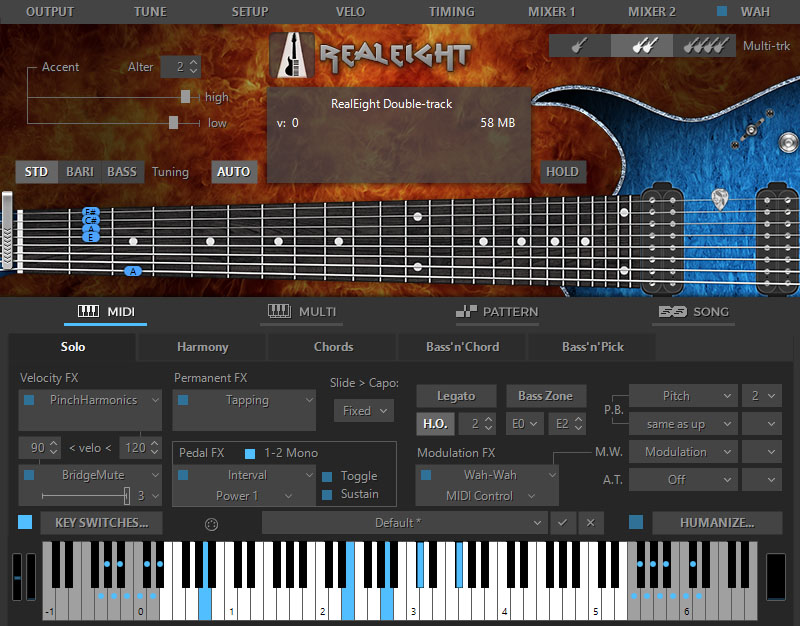Today I want to compare two virtual guitars. First is Ample Metal Eclipse from Ample Sound. Sound of real ESP Eclipse guitar is now in a small application. Guitar has a Drop C tuning and it's very suitable for modern sound. Second is RealEight from Musiclab. It's hard to say what kind of guitar is this - fashion for lowered tuning gave a start to production of a large numbers extended range guitars.
So, let's begin.
Ample Metal Eclipse
Black body, black fretboard, black pickups and only strings, inlay, frets and machine heads glint with evil glint. It looks very cool.
Advantages:
- And it sounds very cool. Very high quality, deep, rich sound.
- Drop C Tuning. The usual six-string, but it fits well with modern sound, where an extended range is required. Also, this is a rarity for this company - usually this is standard E or Drop D.
- Ease. You don't need much knowledge. A few clicks - and guitar part is ready.
- Humanization. You can make a guitar sound very close to what you get when playing a real guitarist on a real guitar. But unlike the next example, this happens automatically.
- Several options for writing guitar parts. In addition to standard "Strummer" you can import guitar tabs in GP format. Also there is an excellent function called Riffer. This feature makes it easy to create riffs. It's also possible to generate a random riff: you only need to select measure size, key and chord.
- You can create a timbre. In "FX" tab there are most popular pedals: compressor, overdrive, equalizer, chorus, phaser, delay, reverb and wah-wah.
Disadvantages:
- Despite the long development, plugin is still unstable. Can refuse to work at any time.
- Plugin requires a lot of CPU resources. That is, you need a very powerful computer.
- He sees only Cubase / Nuendo and only 8 and higher versions.
 RealEight
RealEightAt first it's difficult to focus on one thing: there are not only many strings, but also many elements on control panel. In a few minutes, poking at random begins to understand more.
Advantages:
- Installing the plugin, you can immediately two instruments: guitar and bass.
- Wide range. There are additional strings - seventh (B1) and eighth (F#1). Bass is an octave lower.
- Thin settings. You can form almost any sound. Probably, for this reason, this was called "Real."
- Requires little CPU. Suitable for weak computers.
- Any sequencer sees it.
Disadvantages:
- Sound can't be called qualitative. Usual Chinese eight-string for 150-200 USD.
- Sound has a very turbid attack.
- Requires a lot of knowledge. At first it may seem that it's intended for beginners who have a weak computer. But this impression is deceptive. This is very difficult to understand.
- Difficulties don't end there. This plugin sees only standard patterns. Non-standard patterns with this - it's a real misery. Importing custom MIDI files to working directory does't give anything.
It turns out these are interesting opposites.
